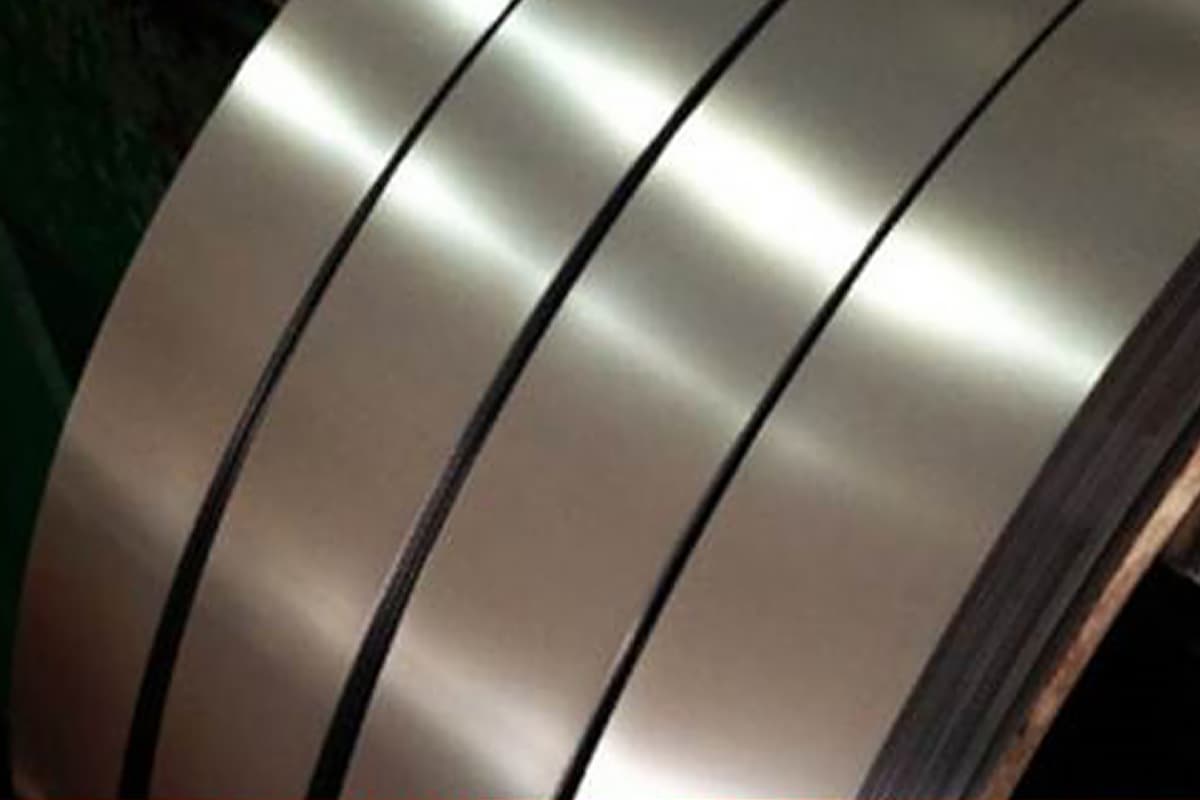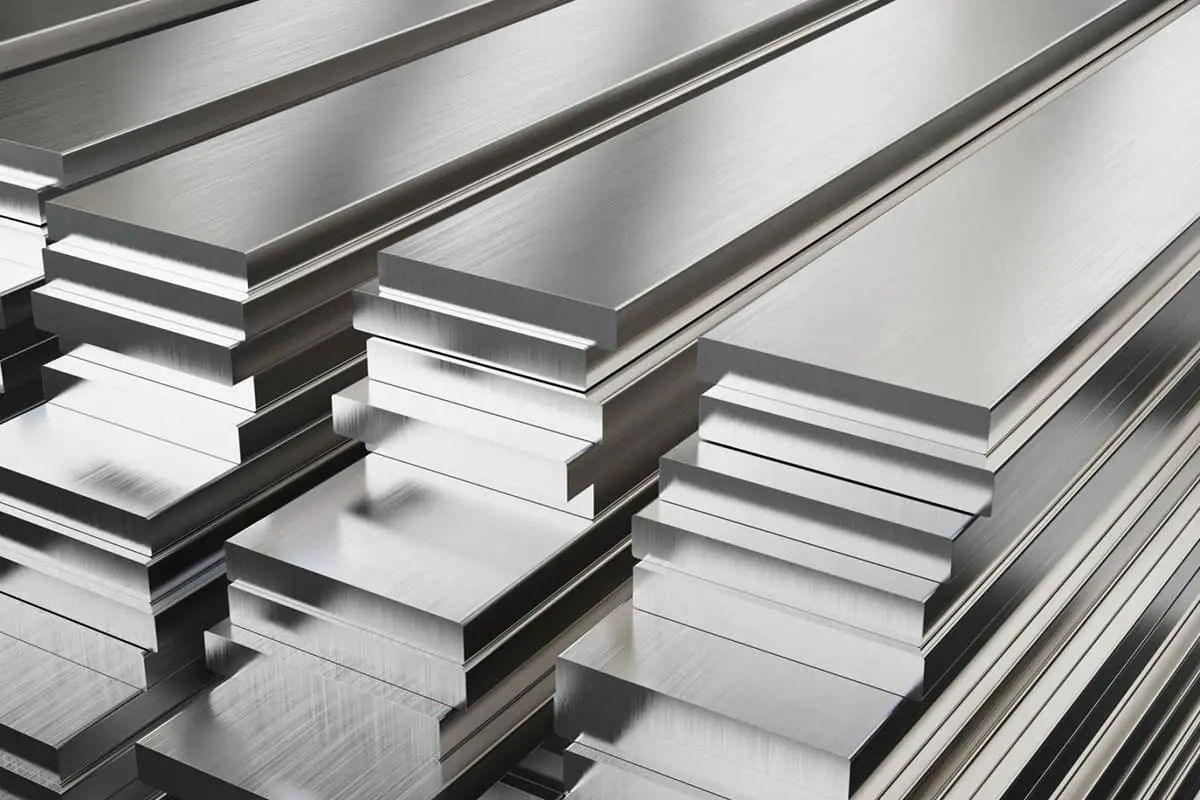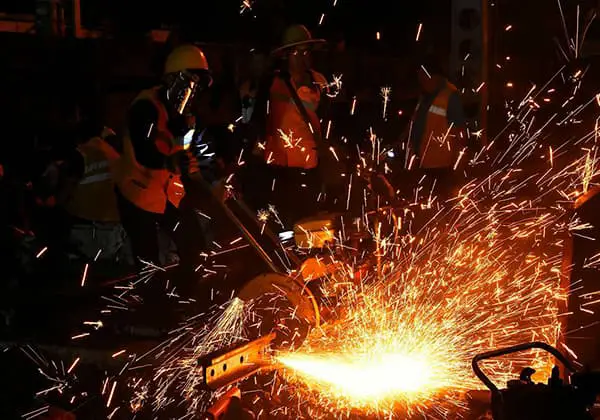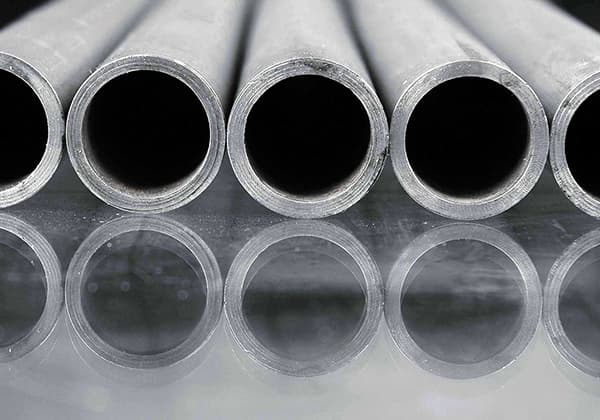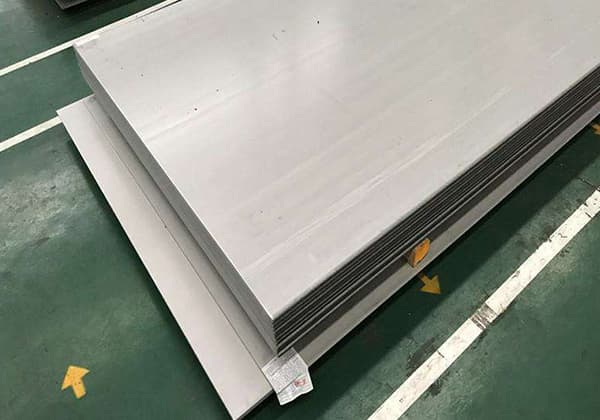
Have you ever struggled to calculate the exact weight of stainless steel for a project? Understanding the varying densities of different stainless steel grades is crucial. This article provides a comprehensive density chart, breaking down the densities of various stainless steel types, such as chrome-nickel and chrome-manganese-nitrogen alloys. By the end of the read, you’ll know how to accurately determine material costs and make precise calculations for your machining projects. Dive in to streamline your budgeting process with these essential insights.
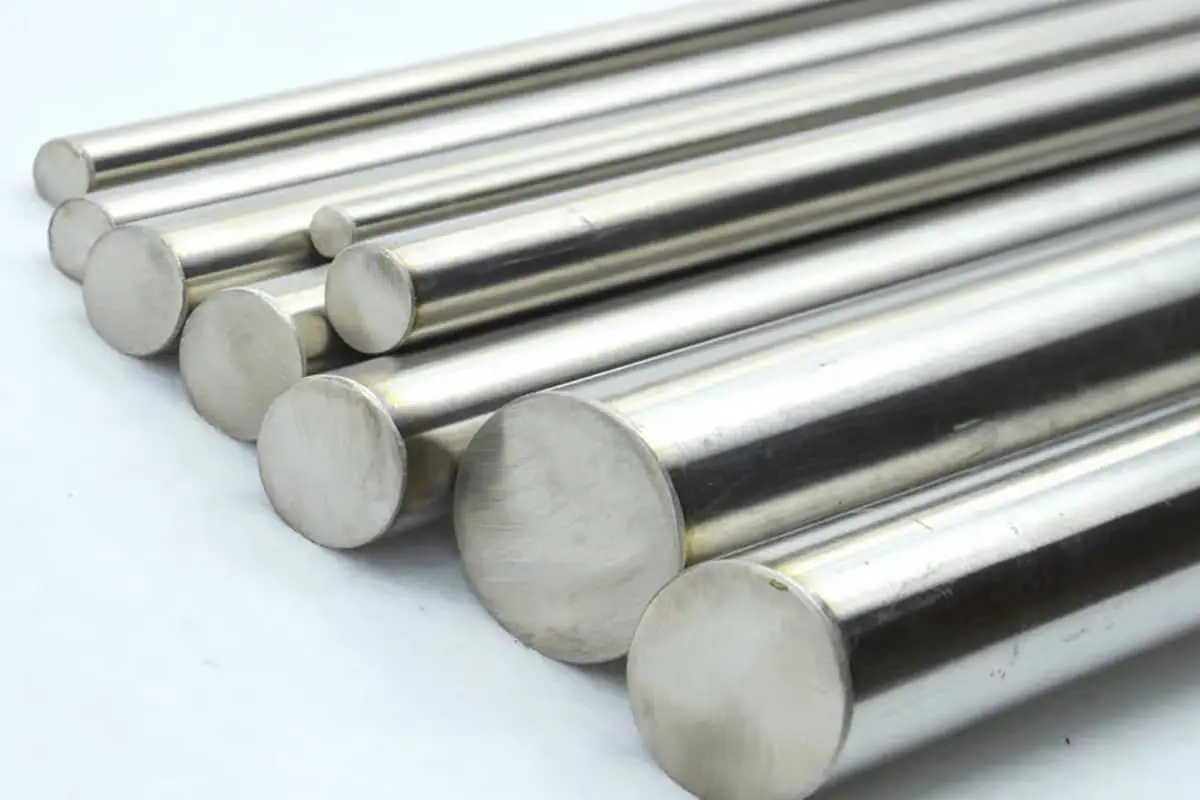
The most challenging aspect of budgeting for mechanical machining is accurately calculating the cost of stainless steel materials. This complexity arises primarily due to the variable density of stainless steel, which is a consequence of its alloy nature with diverse components and concentrations. The lack of a definitive density makes precise cost estimation difficult, but not impossible.
Accurate calculations can be achieved when the ratios of different alloying elements are known. The density variations are significant among different types of stainless steel:
Even within the same grade, slight compositional differences can lead to density variations.
Based on national standards and industry data, the approximate densities (g/cm³) of various stainless steels are as follows:

| Stainless Steel | Density |
| 201 | 7.93 |
| 202 | 7.93 |
| 301 | 7.93 |
| 302 | 7.93 |
| 304 | 7.93 |
| 304L | 7.93 |
| 305 | 7.93 |
| 321 | 7.93 |
| 309S | 7.98 |
| 310S | 7.98 |
| 316 | 7.98 |
| 316L | 7.98 |
| 347 | 7.98 |
| 405 | 7.75 |
| 410 | 7.75 |
| 420 | 7.75 |
| 409 | 7.7 |
| 430 | 7.7 |
| 434 | 7.7 |
| Grade | Density (Kg/dm³) |
| 00Cr30Mo2 | 7.64 |
| 00Cr27Mo | 7.67 |
| 1Cr17Mo | 7.7 |
| 1Cr15 | 7.7 |
| 3Cr16 | 7.7 |
| 00Cr27Mo | 7.67 |
| 1Cr17 | 7.7 |
| 00Cr17 | 7.7 |
| 7Cr17 | 7.7 |
| 1Cr12 | 7.76 |
| 1Cr13 | 7.76 |
| 0Cr13Ai | 7.75 |
| 00Cr12 | 7.76 |
| 0Cr13Ai | 7.75 |
| 2Cr13 | 7.75 |
| 3Cr13 | 7.75 |
| 0Cr18Ni13Si4 | 7.75 |
| 00Cr18Mo2 | 7.75 |
| 0Cr26Ni5Mo2 | 7.8 |
| 1Cr17Mn6Ni5N | 7.93 |
| 00Cr18Ni9S13 | 7.93 |
| 1Cr17Mn6Ni6N | 7.93 |
| 1Cr18nNi8Ni5N | 7.93 |
| 00Cr19Ni13Mo3 | 7.98 |
| 0Cr19Ni12Mo3 | 7.98 |
| 0Cr25Ni20 | 7.98 |
| 0Cr18Ni12Mo2Cu2 | 7.98 |
| 00Cr18Ni14Mo2Cu2 | 7.98 |
| 0Cr19Ni12Mo3 | 7.98 |
| 00Cr19Ni13Mo3 | 7.98 |
| 0Cr18Ni11Nb | 7.98 |
| 0Cr17Ni12Mo2N | 7.98 |
| 00Cr17Ni14Mo2 | 7.98 |
| 0Cr17Ni12Mo2N | 7.98 |
| 00Cr17Ni13Mo2N | 7.98 |
| 0Cr18Ni16Mo5 | 8 |
| 1Cr17Ni7 | 7.93 |
| 0Cr23Ni13 | 7.93 |
| 1Cr17Ni8 | 7.93 |
| 1Cr18Ni9 | 7.93 |
| 1Cr18Ni9Si3 | 7.93 |
| 0Cr19Ni9 | 7.93 |
| 00Cr19Ni11 | 7.93 |
| 0Cr19Ni9N | 7.93 |
| 0Cr18Ni11Ti | 7.93 |
| 0Cr17Ni17Al | 7.93 |
| China | Japan | United States | United Kingdom | Germany | France | Former Soviet Union |
| GB1220-92[84] | JIS | AISI | BS 970 Part4 | DIN 17440 | NFA35-572 | TOCT5632 |
| GB3220-92[84] | UNS | BS 1449 Part2 | DIN 17224 | NFA35-576~582 | ||
| NFA35-584 | ||||||
| 1Cr17Mn6Ni5N | SUS201 | 201 | — | — | — | — |
| 1Cr18Mn8Ni5N | SUS202 | 202 | — | — | — | 12×17.T9AH4 |
| — | — | S20200 | 284S16 | — | — | — |
| 2Cr13Mn9Ni4 | — | — | — | — | — | — |
| 1Cr17Ni7 | SUS301 | 301 | — | — | — | — |
| — | — | S30100 | 301S21 | X12CrNi177 | Z12CN17.07 | — |
| 1Cr17Ni8 | SUS301J1 | — | — | X12CrNi177 | — | — |
| 1Cr18Ni9 | SUS302 | 302 | 302S25 | X12CrNi188 | Z10CN18.09 | 12×18H9 |
| 1Cr18Ni9Si3 | SUS302B | 302B | — | — | — | — |
| Y1Cr18Ni9 | SUS303 | 303 | 303S21 | X12CrNiS188 | Z10CNF18.09 | — |
| Y1Cr18Ni9Se | SUS303Se | 303Se | 303S41 | — | — | — |
| 0Cr18Ni9 | SUS304 | 304 | 304S15 | X2CrNi89 | Z6CN18.09 | 08×18B10 |
| 00Cr19Ni10 | SUS304L | 304L | 304S12 | X2CrNi189 | Z2CN18.09 | 03×18H11 |
| 0Cr19Ni9N | SUS304N1 | 304N | — | — | Z5CN18.09A2 | — |
| 00Cr19Ni10NbN | SUS304N | XM21 | — | — | — | — |
| 00Cr18Ni10N | SUS304LN | — | — | X2CrNiN1810 | Z2CN18.10N | |
| 1Cr18Ni12 | SUS305 | S30500 | 305S19 | X5CrNi1911 | Z8CN18.12 | 12×18H12T |
| [0Cr20Ni10] | SUS308 | 308 | — | — | — | — |
| 0Cr23Ni13 | SUS309S | 309S | — | — | — | — |
| 0Cr25Ni20 | SUS310S | 310S | — | — | — | — |
| 0Cr17Ni12Mo2N | SUS315N | 316N,S31651 | — | — | — | — |
| 0Cr17Ni12Mo2 | SUS316 | 316 | 316S16 | X5CrNiMo1812 | Z6CND17.12 | 08×17H12M2T |
| 00Cr17Ni14Mo2 | SUS316L | 316L | 316S12 | X2CrNiMo1812 | Z2CND17.12 | 03×17H12M2 |
| 0Cr17Ni12Mo2N | SUS316N | 316N | — | — | — | — |
| 00Cr17Ni13Mo2N | SUS316LN | — | — | X2CrNiMoN1812 | Z2CND17.12N | — |
| 0Cr18Ni12Mo2Ti | — | — | 320S17 | X10CrNiMo1810 | Z6CND17.12 | — |
| 0Cr18Ni14Mo2Cu2 | SUS316J1 | — | — | — | — | — |
| 00Cr18Ni14Mo2Cu2 | SUS316J1L | — | — | — | — | — |
| 0Cr18Ni12Mo3Ti | — | — | — | — | — | — |
| 1Cr18Ni12Mo3Ti | — | — | — | — | — | — |
| 0Cr19Ni13Mo3 | SUS317 | 317 | 317S16 | — | — | 08X17H15M3T |
| 00Cr19Ni13Mo3 | SUS317L | 317L | 317S12 | X2CrNiMo1816 | — | 03X16H15M3 |
| 0Cr18Ni16Mo5 | SUS317J1 | — | — | — | — | — |
| 0Cr18Ni11Ti | SUS321 | 321 | — | X10CrNiTi189 | Z6CNT18.10 | 08X18H10T |
| 1Cr18Ni9Ti | — | — | — | — | — | 12X18H20T |
| 0Cr18Ni11Nb | SUS347 | 347 | 347S17 | X10CrNiNb189 | Z6CNNb18.10 | 08X18H12B |
| 0Cr18Ni13Si4 | SUSXM15J1 | XM15 | — | — | — | — |
| 0Cr18Ni9Cu3 | SUSXM7 | XM7 | — | — | Z6CNU18.10 | — |
| 1Cr18Mn10NiMo3N | — | — | — | — | — | — |
| 1Cr18Ni12Mo2Ti | — | — | 320S17 | X10CrNiMoTi1810 | Z8CND17.12 | — |
| 00Cr18Ni5Mo3Si2 | — | S31500 | — | 3RE60(瑞典) | — | — |
| 0Cr26Ni5Mo2 | SUS329J1 | — | — | — | — | — |
| 1Cr18Ni11Si4AlTi | — | — | — | — | — | — |
| 1Cr21Ni5Ti | — | — | — | — | — | — |
| 0Cr13 | SUS410S | S41000 | — | X7Cr13 | Z6C13 | 08X13 |
| 1Cr13 | SUS410 | 410 | 410S21 | X10Cr13 | Z12Cr13 | 12X13 |
| 2Cr13 | SUS420J1 | 420 | 420S29 | X20Cr13 | Z20Cr13 | 30X13 |
| — | — | S4200 | 420S27 | — | — | — |
| 3Cr13 | SUS420J2 | — | 420S45 | — | — | 14X17H2 |
| 3Cr13Mo | — | — | — | — | — | — |
| 3Cr16 | SUS429J1 | — | — | — | — | — |
| 1Cr17Ni2 | SUS431 | 431 | 431S29 | X22CrNi17 | Z15CN-02 | — |
| 7Cr17 | SUS440A | 440A | — | — | — | — |
| 11Cr17 | SUS440C | 440C | — | — | — | 95X18 |
| 8Cr17 | SUS440B | 44013 | — | — | — | — |
| 1Cr12 | — | — | — | — | — | — |
| 4Cr13 | SUS420J2 | — | — | X4DCr13 | Z40C13 | — |
| 9Cr18 | SUS440C | 440C | — | X105CrMo17 | Z100CD17 | — |
| 9Cr18Mo | SUS440C | 440C | — | — | — | — |
| 9Cr18MoV | SUS440B | 440B | — | X90CrMoV18 | Z6CN17.12 | — |
| 0Cr17Ni4Cu4Nb | SUS630 | 630 | — | — | — | — |
| 0Cr17Ni7Al | SUS631 | 631 | — | — | — | 09X17H710 |
| — | — | S17700 | — | X7CrNiAl177 | Z8CNA17.7 | — |
| 0Cr15Ni7Mo2Al | — | 632 | — | — | — | — |
| — | — | S15700 | — | — | Z8CND15.7 | — |
| 00Cr12 | SUS410 | — | — | — | — | — |
| 0Cr13Al[00Cr13Al] | SUS405 | 405 | — | — | — | — |
| — | — | S40500 | 405S17 | X7CrAl13 | Z6CA13 | — |
| 1Cr15 | SUS429 | 429 | — | — | — | — |
| 1Cr17 | SUS430 | 430 | — | — | — | 12X17 |
| — | — | S43000 | 430S15 | X8Cr17 | Z8C17 | — |
| [Y1Cr17] | SUS430F | 430F | — | — | — | — |
| — | — | S43020 | — | X12CrMoS17 | Z10CF17 | — |
| 00Cr17 | SUS430LX | — | — | — | — | — |
| 1Cr17Mo | SUS434 | 434 | — | — | — | — |
| — | — | S43400 | 434S19 | X6CrMo17 | Z8CD17.01 | — |
| 00Cr17Mo | SUS436L | — | — | — | — | — |
| 00Cr18Mo2 | SUS444 | — | — | — | — | — |
| 00Cr27Mo | SUSXM27 | XM27 | — | — | — | — |
| — | — | S44625 | — | — | Z01CD26.1 | — |
| 00Cr30Mo2 | SUS447J1 | — | — | — | — | — |
| 1Cr12 | SUS403 | 403,S40300 | 403S17 | — | — | — |
| 1Cr13Mo | SUS410J1 | — | — | — | — | — |
| Grade | Density(g/cm3) |
| 1Cr18Ni9 0Cr19Ni19 00Cr19Ni11 0Cr18Ni11Ti (1Cr18Ni9Ti) | 7.93 |
| 0Cr25Ni20 0Cr17Ni12Mo2 00Cr17Ni14Mo2 0Cr18Ni11Nb | 7.98 |
| 00Cr17 | 7.70 |
| 0Cr13 00Cr18Mo2 | 7.75 |
These are some of the most commonly used stainless steel densities. The data may not be entirely accurate and is only provided as a reference.
If you are only making a rough calculation, you can use the general steel density of 7.85g/cm³ for your calculations. The deviation won’t be too large (however, for 316, the material price is too high, so a rough estimate will have a large discrepancy).
For standard materials, we can use relative theoretical data to calculate the weight. The formula is:
Weight (kg) = Thickness (mm) * Width (m) * Length (m) * Density value (g/cm³)
These are some of the most commonly used stainless steel density tables, provided only as a reference. If you are just making an estimate, you can calculate using the general steel density of 7850kg/cm³.
To improve cost estimation accuracy, consider the following factors:
By incorporating these considerations and using the most specific density data available, manufacturers can significantly improve the accuracy of their stainless steel material cost estimates for mechanical machining projects.


